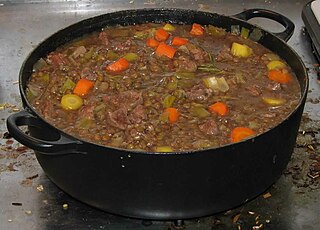Adam Smith—Abducted!
July 14, 2021

Read about Adam Smith's abduction in infancy, and learn how to cook a Roma-style beef stew.

Read about Adam Smith's abduction in infancy, and learn how to cook a Roma-style beef stew.
Life for many children in the 18th century was difficult. If a child was fortunate to grow up in an affluent household, he or she could expect nannies and tutors. But children of the working classes were expected to earn their keep, often by the time they were 8 or 9 years old.
It wasn’t unheard of for children to be bought and sold or imprisoned to keep them from running away. Life for these children was difficult and often involved beatings, malnutrition, and hard labor. It was uncommon for children who were abducted or stolen to find their rightful families again. These crimes were nearly always blamed on itinerant workers (tinkers) or the nomadic Roma people (gypsies) and brought a penalty of death. Large rewards were sometimes circulated in these communities hoping it would inspire individuals to give up the children.
In cities like London, these children were often never seen again. However, in rural areas, locals tended to know when a band of travelers were in the area. When a child went missing, everyone was called into action.
And so it was in 1724 when Adam Smith was only 3 years old. On a trip with his mother to her home village of Strathenry, he was abducted, snatched from his mother’s arms. Locals suspected tinkers or a band of Roma. There was a Gypsy Way, or path many itinerant travelers used, near the town where it was said he was taken by a tinker woman.
Stories vary on how the young Smith was recovered. Biographer Ian Simpson Ross notes that in one story, Smith was missed and his uncle pursued the vagrants. Another version notes the tinkers had traveled a good distance before the child was found. And Rae’s account is that a gentleman encountered a Roma woman with a piteously crying child who gave him up on seeing a search party.
Perhaps all can agree that, as Rae notes, due to the notorious absent-mindedness of our subject, Adam Smith “would have made a poor gypsy.”
The sad fact of the early 1700s, is that Smith would have most likely have been spirited to England and sold to a workhouse or family in need of a laborer. He might not have survived to adulthood and most likely would never have returned to Scotland. However, by all accounts, children abducted by itinerant bands of the Roma people were treated well until they were sold or bartered away.
Most Roma spoke poor English, if any at all, but for the few hours or days he was missing, we can envision a 3-year-old Adam Smith as a happy baby, oblivious to his predicament.
Roma food today is considered an up-and-coming world cuisine shaped by the countries and histories of its people. The Roma were considered nomadic from the 14th to 18th centuries and were skilled at integrating local foods and customs into their cuisine. One can imagine that they ate much of what could be foraged in the forest from mushrooms to rabbits. (Hedgehogs or other small animals wrapped in clay and baked directly in the fire were a popular specialty.)
It’s likely a hearty stew was made with rabbit, squirrel, or other small animals, along with root vegetables, herbs, and greens from the forest. We’ll stick to more traditional beef, but for this hearty meal, you can imagine a toddling Adam Smith and wonder what might have been. Note the absence of potatoes, which weren’t a staple in Scotland for another 50 years.
Roma Beef Stew
(Serves 4)
3 tbsp vegetable oil
1 lb beef round or stew meat, cut into 2-inch pieces
1 lb assorted root vegetables such as carrots, parsnips, leeks, wild onions, or rutabagas, peeled and cut into 1-inch pieces
2 cloves garlic, minced
3 tbsp flour
1/2 tsp dried pepper like cayenne or pimenton
1 tsp paprika
2 tsp dried thyme
1 bay leaf
1 cup dark beer such as porter or stout
4 cups beef stock
1 bunch kale, cut from the stems and shredded
Salt and pepper
- In a large stock pot or Dutch oven, heat the oil over medium high heat. Brown the beef on all sides, seasoning with salt and fresh ground pepper. Remove the beef.
- Add the vegetables. Season with salt and pepper and sauté over medium heat until softened, about 5 minutes. Add the minced garlic and stir.
- Add the beef back to the pot. Sprinkle the beef and vegetables with the flour, stirring to coat. Cook for another 5 minutes over medium heat.
- Turn the heat up to medium high. Add the beer and stir to deglaze the pan, scraping up the bits from the bottom of the pan. Add the beef stock, stirring to combine. Bring to a boil for 5 minutes.
- Cover and reduce temperature so stew is simmering. Simmer for 60-90 minutes or until meat falls apart with a fork. Just before serving, add the kale.
- Serve with crusty bread to soak up the juices.